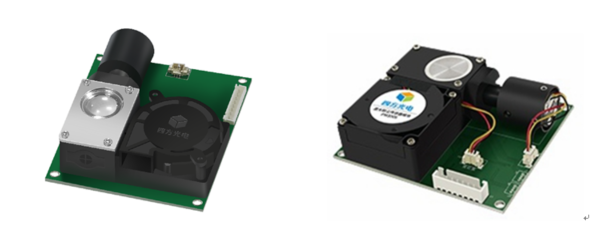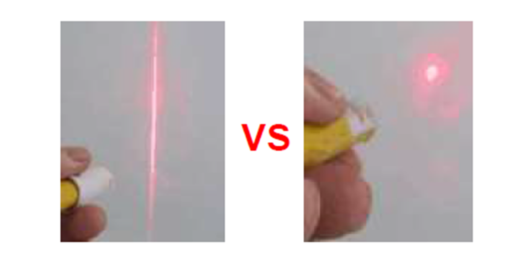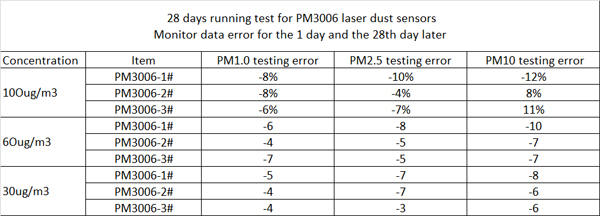 EMAIL
EMAIL


China’s central government had launched a three-year plan to roll back persistent air pollution in 2018. And 2020 is the lastcritical year for the “Blue Sky Protection Campaign”. According to the 2020 Chinese government work reportreleased during the "Two Sessions", energy consumption per unit of GDP and the discharge of major pollutants in 2020 will continue to decline; theair pollution control in key areas will be strengthened;
2020 is the last year for Three-Year Action Plan forwinning the blue sky war and it is as part of the "13th Five-Year Plan" for environmental protection. Will China continue the success of theprevious five years plan and achieve the2018-2020 Three-Year Action Plan? Both the public and environmentalists arekeen to see how China would continue its campaign for “bluer skies”.
Particulate Matter (PM) is set as targets for keyregions to significantly reduce PM2.5 levels. So the control of fugitive dustpollution has become one of the key points for the completion of air pollutioncontrol goals. How to monitor the air particle matter concentration fordifferent area and regions? High-performance particulate matter sensor isdefinitely the key to realize overall monitoring, precisely controlling, costreduction etc.
In the early stage of the dust sensor industry'sdevelopment, dust monitoring equipment was mainly based on the beta-rayabsorption method. However, due to factors such as the large size and highcost, the dust sensors were not widely usedfor outdoor air quality monitoring.
Laser scattering technology based PM sensorshad passed an innovative developing process from LED lighting source& scatteringsampling to detect the trend of particular matter’s concentration to laserlighting source& fan sampling to precisely measure the PM2.5 concentrationin civil use indoor air quality monitoring application.
However, the precise monitoring requirements of PM10 andTSP which are outdoor air quality indicators could not be satisfied byhousehold dust sensor.Therefore, an economical, small sized PMsensor to measure PM2.5,PM10 and TSP at the same time has been the mainchallenge to integrate dust sensor to dust monitoring devices.
1. To keep high linear correlation with β-ray principle equipment
The national station monitoring equipment adopts thebeta-ray principle, and the monitoring data of other dust monitoring stationsmust maintain a high degree of consistency with it. However, due to thedifference in principle, to achieve this, the sensor have to adopt higher performance components, which can effectively improve the ability of particle recognition.
2. To meet the requirements of outdoor working temperature of-30℃~70℃
Temperature has a great influence on the laser source ofthe sensor. However, the outdoor temperature range is wider. In summer, whenexposed to the sun, the temperature may reach 70°C; in winter, the lowesttemperature in the north may reach minus 30°C. This requires the sensor notonly to work normally at this temperature, but also to ensure the accuracy ofdetection.
3. Avoiding the influence of the watermist on the measurement accuracy
Since the outdoor environment often encounters frost anddew, the water vapor entering the sensor will seriously affect the measurement value, andeven cause permanent damage to the sensor.
4. The influence on measurement accuracy by dust accumulation in longterm use
The dust sensor works in outdoors, and the largeparticles of dust passing through the sensor sampling air duct will be affectedby gravity and adhere to the inside of the sensor. Long-term use will cause alarge amount of dust to accumulate inside the sensor, which affects themeasurement accuracy.
Based on innovative light scattering technology, Cubichas successively launched a series of dust sensor such as infrared dust sensorsand laser dust sensors, which are widely used in the detection of indoor air quality, outdoor air quality, in-vehicle air quality etc.
Based on household dust sensor products, Cubic haspromoted technological innovation and upgrading according to the applicationscenarios of dust sensors and the requirements of different local standards.And successfully launch the PM3003X and PM3006 outdoor particles mattersensors.

Figure 1: PM3003X(left)andPM3006 (right) Laser Dust Senor
1. Intelligent recognitiontechnology of dust particles (API technology)
PM3003X and PM3006 adopt the unique API (Auto ParticleIdentification) technology, which is calibrated under a variety of dustsources, and automatically judges the distribution of detected particles toensure the detection accuracy of PM2.5, PM10 and TSP.

PM2.5 and PM10 monitor resultcompared with METONE
2. High temperature resistance, constant power,linear laser tube
PM3003X, PM3006 laser dust sensor adopts constantpower, linear light source whose working temperature is -30~70℃. Its opticalpower is as high as 100mW, which is more than 20 times higher than that ofpoint light source. The original signal is stronger and the recognition efficiency for particle is greatly improved. At the same time, constant powercontrol is adopted for the light source to ensure the stable output of theoriginal signal and the stability of the measurement.

Figure 2: Thelight source difference between outdoor dust sensor and household dust sensor
Left:high-power linear light source, right: low-power spot light source
3. It comes with a water mistremoval device, which is not affected by water vapor.
PM3003X and PM3006 laser dust sensor developed by Cubic is equipped with a dehumidification device to prevent small water droplets inthe outdoor environment from entering the detection gas chamber and eliminate the influence of water vapor on the accuracy of the dust sensor.

4. Innovative structure design,long-term dust prevention.
PM3003X and PM3006 laser dust sensors have a long-term anti-fouling structure design for the sampling air duct through fluid mechanics simulation. After actual verification, it can reduce the outdoor environment's impact on sensor detection accuracy and reduce subsequent maintenance costs.

Outdoor dust grid monitoring has experienced the early β-ray absorption method to the process of adopting the civil laser dust sensor.In the course of actual use, it is found that the civil laser dust sensor could not meet the demands. It is not applicable for all-weather environment for -30~70℃ outdoor ambient temperature. Also in the monitoring site, especially the construction site there will be haze-reducing water mist spraying, or rain orhumidity. Water mist is often judged as severe haze. So the monitor dust datais not accurate. At the same time, grid-based outdoor dust monitoring hopes toobtain partial comparisons with multiple parameters of PM2.5/PM10/TSP provided by the National Atmospheric Environment Monitoring Network. Civil laser sensorshave low laser power and low sampling flow, and PM10 recognition rate is very low. Civil laser sensors usually measure PM10 concentration based on the number of PM2.5, resulting in distortion of PM10 monitoring data. However the PM3003X andPM3006 laser particular matter sensors developed by Cubic adopt wide-temperature high-power linear laser light source, API dust automatic identification technology, and advanced flow channel design to achieve anti-pollution,large-flow vehicle-level sampling mechanism, and water fog removal devices for high-humidity water environment. It can achieve a high-precision measurement ofthe correlation coefficient between outdoor dust and β-ray absorption of 0.9 with low cost.